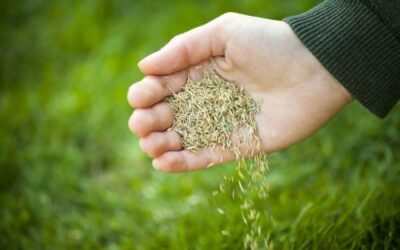At Jack’s Lawn Care & Landscaping, we believe the secret to a lush, vibrant lawn goes much
deeper than just the grass you see on the surface. The true foundation of a healthy lawn lies
beneath your feet, in the soil itself. Understanding and nurturing soil health is crucial for
achieving and maintaining the green oasis you desire. Here’s why soil health matters and how
you can improve it for a thriving lawn.
Understanding Soil Health
Soil health refers to the condition of the soil in your garden or lawn, including its structure,
nutrient content, and the living organisms within it. Healthy soil provides a supportive
environment for grass roots, allowing for better water retention, nutrient uptake, and resistance
to pests and diseases. In contrast, poor soil health can lead to a struggling lawn, no matter how
much care you put into it.
The Benefits of Healthy Soil
- Improved Water Retention: Healthy soil has better structure, which allows it to absorb and
retain water more efficiently. This means less watering is required, saving you time and
resources. - Enhanced Nutrient Availability: Nutrient-rich soil supports robust plant growth. Essential
nutrients like nitrogen, phosphorus, and potassium are more readily available in healthy soil,
promoting vigorous lawn growth. - Disease and Pest Resistance: A well-nourished lawn can better resist diseases and pests,
reducing the need for chemical treatments.
Steps to Improve Soil Health
- Test Your Soil
Before you can improve your soil, you need to understand its current condition. Soil testing kits
are widely available and can provide insights into pH levels and nutrient deficiencies. Adjusting
the pH and addressing any nutrient imbalances are critical first steps to improving soil health. - Organic Matter is Key
Incorporating organic matter into your soil is one of the most effective ways to enhance its
health. Compost, grass clippings, and leaf mulch can improve soil structure, nutrient content,
and microbial life. Regularly adding organic matter can transform compacted, nutrient-poor soil
into a thriving ecosystem for your lawn.
- Choose the Right Fertilizers
Fertilizers can be a quick way to supply essential nutrients to your lawn. However, it’s important
to select the right type and apply it at the correct rate. Over-fertilizing can harm soil health,
leading to nutrient runoff and soil imbalances. Opt for organic fertilizers when possible, as they
release nutrients slowly and improve soil structure over time. - Practice Proper Watering Techniques
Overwatering can lead to soil compaction and nutrient leaching, while underwatering can stress
your lawn. Implementing proper watering techniques, such as watering deeply but less
frequently, can encourage deeper root growth and improve soil health. - Aeration and Dethatching
Soil aeration involves creating small holes in the soil to allow air, water, and nutrients to
penetrate the grass roots. Dethatching removes the layer of dead turfgrass tissue between the
soil and the living grass. Both practices can significantly improve soil health by enhancing
oxygen levels, reducing compaction, and promoting root growth. - Embrace Diversity
Introducing a variety of grass species can enhance lawn resilience and soil health. Different
species can offer various benefits, including pest resistance, drought tolerance, and nutrient
efficiency. Consult with a landscaping expert to select the best grass types for your lawn. - Minimize Chemical Use
While pesticides and herbicides can offer quick solutions to lawn problems, they can also harm
beneficial soil organisms and contribute to soil imbalances. Whenever possible, opt for natural
pest control methods and organic weed management strategies to protect soil health.
At Jack’s Lawn Care & Landscaping, we understand that nurturing soil health is a long-term
investment in the beauty and resilience of your lawn. By focusing on the soil, you can create a
lush, vibrant lawn that is not only beautiful but also sustainable and resilient. Remember, the
secret to a lush lawn isn’t just what you see on the surface; it’s what lies beneath. Investing time
and effort into improving soil health can yield lush, green rewards for years to come.



